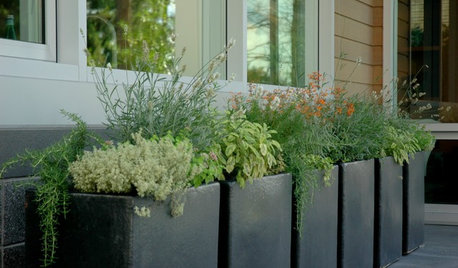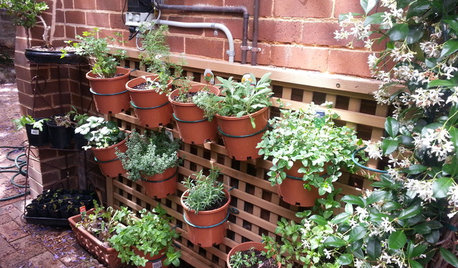Drainage / root depth for bush cherry, honeyberry and pomegranate
zendog
9 years ago
Related Stories

FARM YOUR YARDIf You Have Room for Only One Fruit Tree ...
Juice up a small garden with one of these easier-care or worth-the-effort fruit trees for a mild climate
Full Story
GARDENING GUIDES10 Easy Edibles for First-Time Gardeners
Focus on these beginner-friendly vegetables, herbs, beans and salad greens to start a home farm with little fuss
Full Story
FALL GARDENING11 Trees for Brilliant Fall Color
Give your landscape the quintessential look of autumn with the red, orange and yellow leaves of these standouts
Full Story
EDIBLE GARDENSHow to Grow Your Own Sweet Summer Crops
This guide will help any gardener get started on growing the freshest warm-season veggies and berries for summer
Full Story
GARDENING AND LANDSCAPINGUnexpected Edible Gardens
How to grow your own herbs and vegetables almost anywhere
Full Story
FARM YOUR YARD10 Easy Edibles to Grow in Containers
These herbs, vegetables and fruits are just as happy in a pot as they are in the ground
Full Story
GARDENING GUIDESLush, Foodie Abundance in a Small Urban Garden
This modest backyard garden provides its owner with fruit and vegetables all year round, thanks to an innovative low-maintenance approach
Full Story
FARM YOUR YARD14 Crazy Places to Grow Edibles
Some Houzzers may lack ground for gardening, but they’re never short on imagination
Full StoryMore Discussions









copingwithclay
Embothrium
Related Professionals
Danbury Landscape Architects & Landscape Designers · Forest City Landscape Architects & Landscape Designers · White Oak Landscape Architects & Landscape Designers · Bridgeview Landscape Contractors · Broomfield Landscape Contractors · Brownsville Landscape Contractors · Dickinson Landscape Contractors · Framingham Landscape Contractors · Gresham Landscape Contractors · Kearny Landscape Contractors · Reedley Landscape Contractors · San Pedro Landscape Contractors · St. Louis Landscape Contractors · Lauderdale Lakes Landscape Contractors · Silver Firs Landscape ContractorszendogOriginal Author
copingwithclay
Steve Delaney